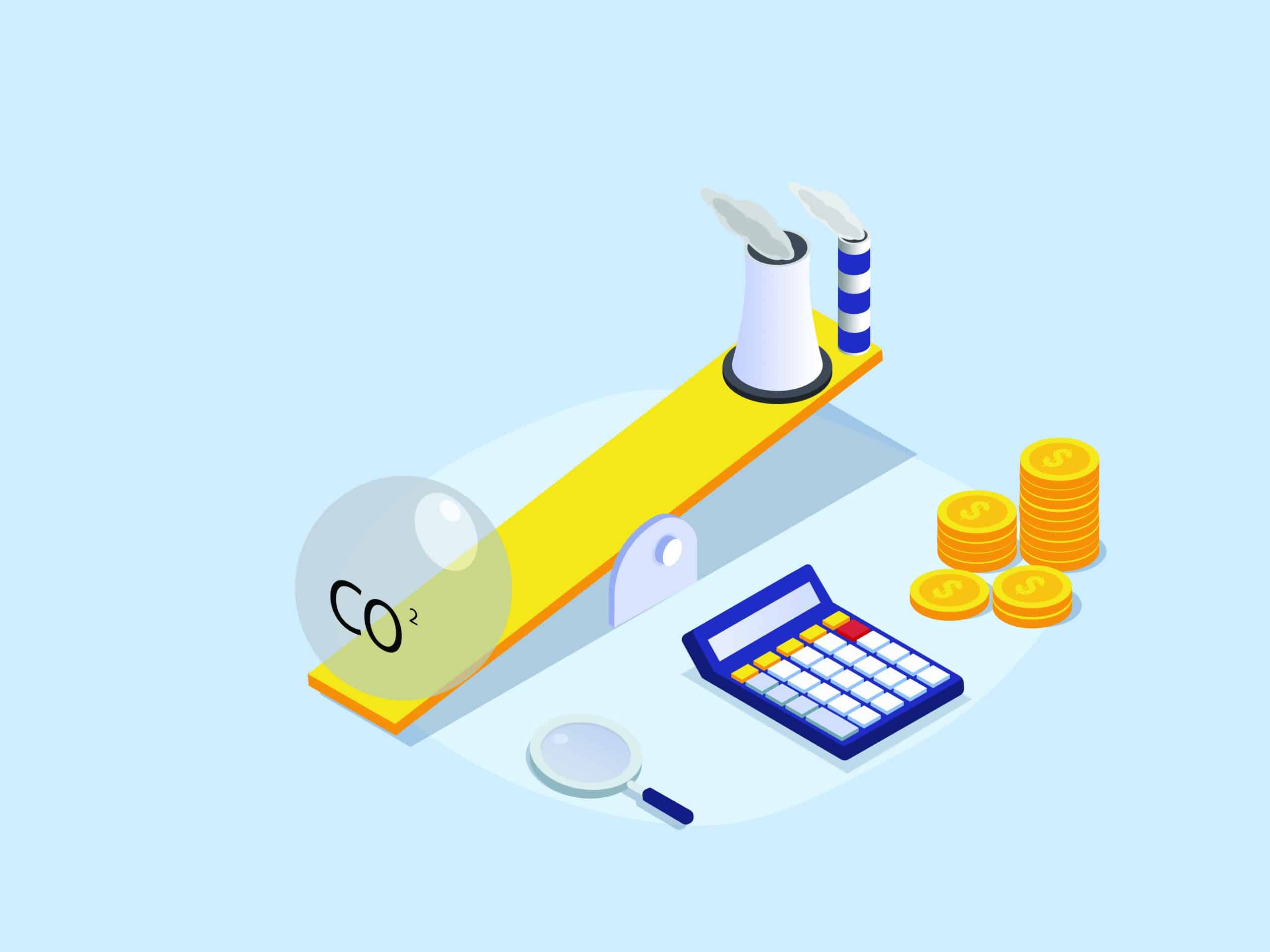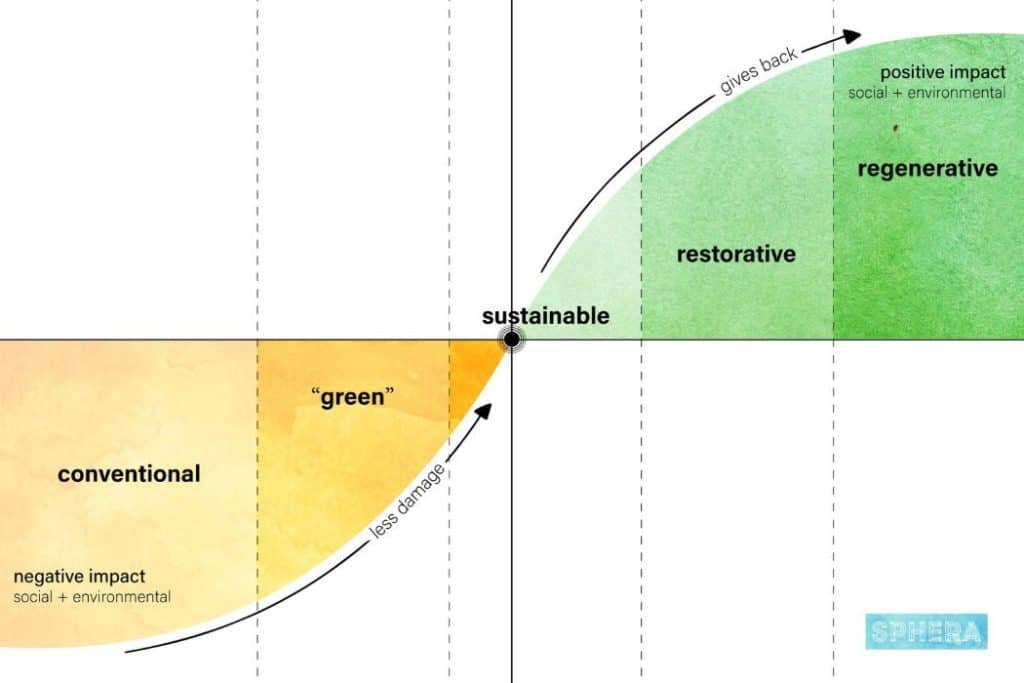No matter what sector your business is in, it’s all about solving people’s problems in return for money. As people’s problems evolve so must your business. You must be agile, lean and rapid (all at once) to adapt and maximise potential opportunities. Economic sustainability could be the answer to ensuring you achieve continuing to solve for your customers. Start thinking about your business in relation to the planet, and you could secure its future. In business, what is more important than that?
In this post we’ll define sustainable economics, give examples of how it is used successfully in business today, and provide best practices of how to become more economically sustainable in your company.
What is Economic Sustainability?
Sustainable economics is about making decisions to safeguard our natural resources for future generations while still promoting economic growth. It’s about the long game rather than short-term wins. After all, without resources for the future, there will be no economy to grow.
With COP27 outcomes being of varying degrees of success, many businesses are taking their sustainability goals into their own hands. At the event, the pedal was taken off the accelerator, so to speak, by removing the promise that emissions would reach its peak by 2025. This means businesses could potentially slow down their transition to more sustainable practices. But many companies voiced that ignoring the climate crisis is no longer an option. Not only do the people running the companies want to contribute positively to the world (rather than negatively), they realise that their customers are already selective and want to understand their green credentials and roadmap to sustainability.
Why is Sustainable Economics Important?
The benefits of choosing to run your business with sustainable economics in mind are almost endless. However, there are 3 main advantages that jump out:
-
Better business conduct = thriving global economy
Competition can mean a race to the bottom but it also drives betterment. The more businesses that are received well due to their green credentials, the more other businesses will adopt this approach. New businesses will more likely set themselves up for putting sustainable practices into every aspect of their new venture, instead of as an afterthought. In turn, success will breed success.
Economic sustainability will positively boost your profits, efficiency, and customer satisfaction.
-
Improvement of lives
Certain decisions, such as taking measures to reduce carbon emissions or improve insulation, will result in cleaner air, cleaner water and better housing. Thus, more people will be living under better circumstances.
-
Planet preservation
If the above reasons aren’t enough- how about saving the planet? Everyone knows and has now accepted that if we continue down this current trajectory, we will run out of the planet’s limited resources by 2040. Therefore it isn’t really a choice anymore. We all must take action. We all must find new ways of running things that actually regenerate the earth.
So, What is Stopping Businesses?
Typically, the high investment cost is the main barrier preventing businesses from switching their practices. This is especially true when that involves having to upgrade infrastructure at scale.
When upgrades mean transitioning to more energy- efficient technology, there is also the downside of loss of value and changing again at the end of the lifespan. Meaning? Another round of capital investment.
However, a growing trend within the renewable/energy-efficient technology sector seeks to servitise project upgrades. This removes the traditional barriers from preventing your business’ sustainability efforts. But more on that below.
How Can Your Business Evolve with Economic Sustainability?
There are many ways your business can become more economically sustainable. Deciding which options are best for you and your company will depend on where you can make the biggest impact and what improvements are possible in relation to your budget.
Let’s focus on businesses that operate out of large premises like manufacturers- the BIG energy consumers. Here are 5 broad areas where you could transition to more economically sustainable practices:
1. Waste less
This should be a mantra for every part of your business because everything costs money. In a previous blog post, LUMENSTREAM’s CEO, Alistair Brown, spoke about Carlsberg commissioning a new, revolutionary water recycling plant. Now, in Carlsberg’s brewery in Frederica (Denmark), they can recycle 90% of their process water, making it the most water-efficient brewery in the world. This soon became a primary marketing message for a brand future-proofing itself by targeting a younger, more environmentally-driven consumer base.
But it’s not just marketing; it’s becoming standard for global companies to report on how effectively they have achieved their energy reduction or environmental impact targets. These kinds of reports are critical factors in any tender winning process.
2. Energy Efficiency
Another form of waste is energy waste- or energy efficiency. We’ve allocated its own section here though as it’s too important to be part of another point.
The lowest hanging fruit when it comes to energy efficiency is your lighting system. It alone can drastically cut your carbon emissions. Measuring your lighting system’s energy consumption is straightforward. In fact, after reviewing a handful of energy bills and a site survey, you can quickly and accurately calculate what your energy consumption and CO2 emissions are today. Then, what they could be if you upgraded your lighting to more energy-efficient technology.
LED is the most efficient lighting technology available making it more environmentally friendly than the old alternatives. The technology can reduce your energy consumption by 80%. When combined with control systems, like motion sensors, the savings are greater still.
Capital investment remains a barrier, but innovative companies like LUMENSTREAM are disrupting the market via LED Lighting as a Service.
After lighting, you will want to look at your heating and the running of any electrical equipment. Making improvements on how the heating (and cooling) of your premises is run can be costly. It may even involve investing in insulating the building but it could significantly cut outgoings on your energy bills when done right. The Carbon Trust has a fantastic guide for energy saving which will help you identify areas where you need make changes.
3. Use of renewable energy sources
With no new fossil fuel investments being made in the UK and the EU from August 2023, and all electricity generation to be fossil fuel-free by 2035, renewable energy sources are not even a question. And about time, too. You can, as a business, choose a ‘green tariff’ where the electricity your business uses comes from renewable energy sources. Although, it may be worth checking what type of green tariff you have as they vary in how green they actually are and they also don’t necessarily contribute to accelerating renewable sources.
Instead of waiting, you may be in a position to take energy into your own hands. Especially with warehouses. You have the rooftop space for your own solar PV to generate your own electricity. This is an increasingly popular option given the soaring energy prices this year with no end in sight.
The UKWA put together an investment case for rooftop solar panels for warehousing. The statistics are very convincing for the benefits for the business and for the UK’s Net Zero goals. UK warehousing alone could prevent 2 million tonnes of CO2 a year from entering the atmosphere while reducing electricity bills by 40-80%.
4. Advocate for regeneration
Look to big businesses such as Danone (which we discussed in this Sustainability Snapshot #20) and Patagonia who have moved beyond talking about sustainability. Their word is regeneration. The idea is to make a positive impact. This graph by Sphera illustrates regeneration beautifully.
Thinking about regeneration goes hand in hand with sustainable economics. Both are about basing decisions on the effect on the environment rather than merely financially.
Examples of regenerative practice range from contributing to rewilding programmes, carbon sequestration, regenerative agriculture, work with local communities, ocean restoration. The list goes on. Find what rings true for you and your business.
5. Identify opportunities for circularity
Arguably it’s much easier, and less costly, to figure circularity out at the conception of your business idea. This may seem like too big a change to make happen but technology has allowed for more and more processes/products to become more circular.
Take clothing, for example. Fashion is notorious for its throwaway culture. The people behind Teemill saw this and decided there must be a different way. They started their own brand that was going to be circular, organic and renewable. These pioneers then realised that to make a real difference, they needed to offer their supply chain so other brands could do the same. Now, 10,000+ brands use their mills throughout the UK and the EU.
But, if you are a bit away from making your own products circular, think of other ways to bring this into your business. For instance, use recycled materials for office supplies, take part in recycling schemes for your computers, replace any single-use aspect where possible.
The Takeaway
At the end of the day, saving/making money in business no longer needs to be to the detriment of the environment. On the contrary, it now should work side-by-side. There are also a variety of ways to make your business decisions more sustainable at differing sizes of impact.
A growing global economy on a sustainable, or even regenerative planet? I think we can all get on board with that.
Don’t forget a great place to start is with Lighting as a Service. If your business has not recently upgraded its lighting infrastructure to LEDs then see how it works in our explainer video in less than two minutes.
Article was originally published 22/11/21 and has been updated to be more accurate and relevant on 09/01/22


